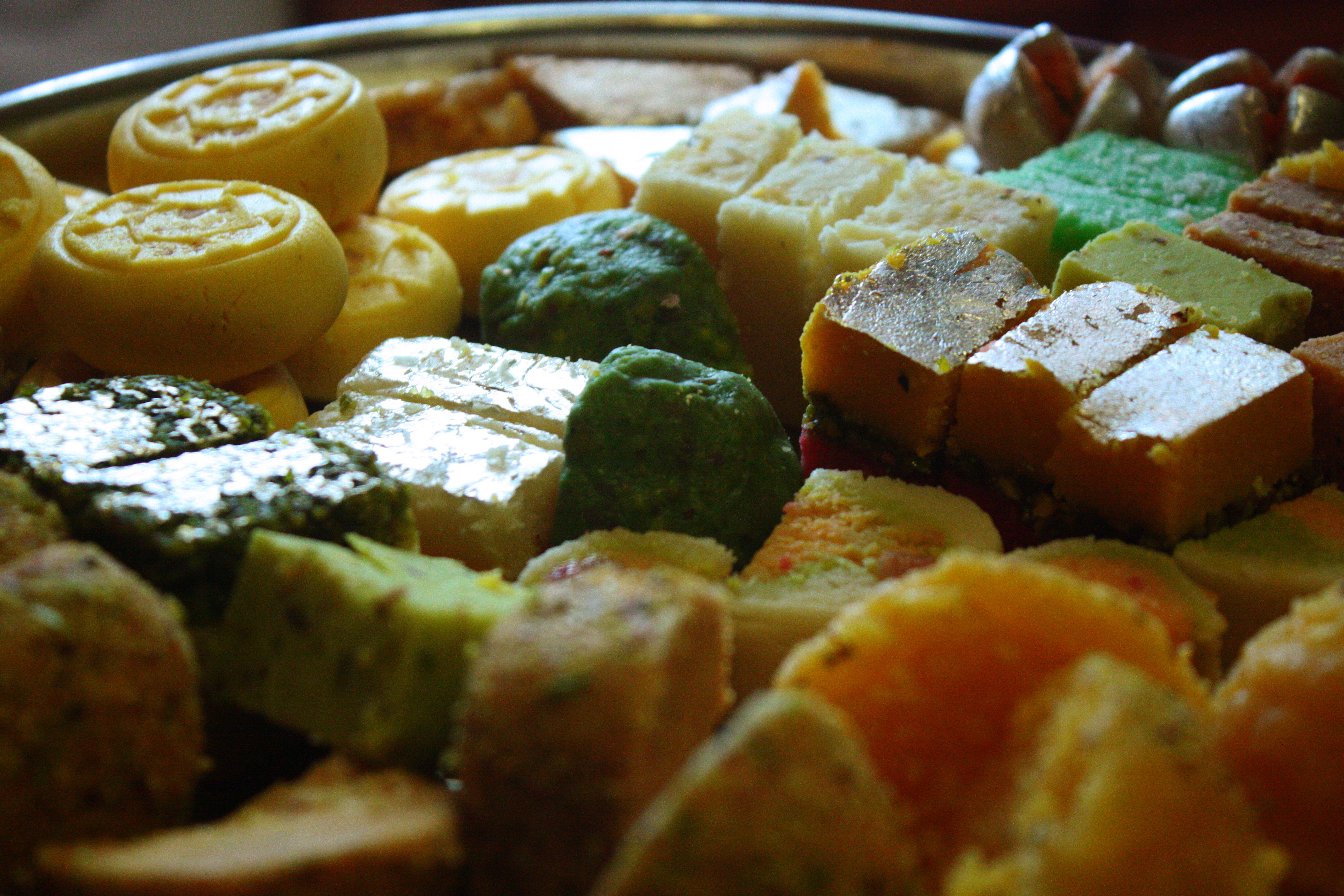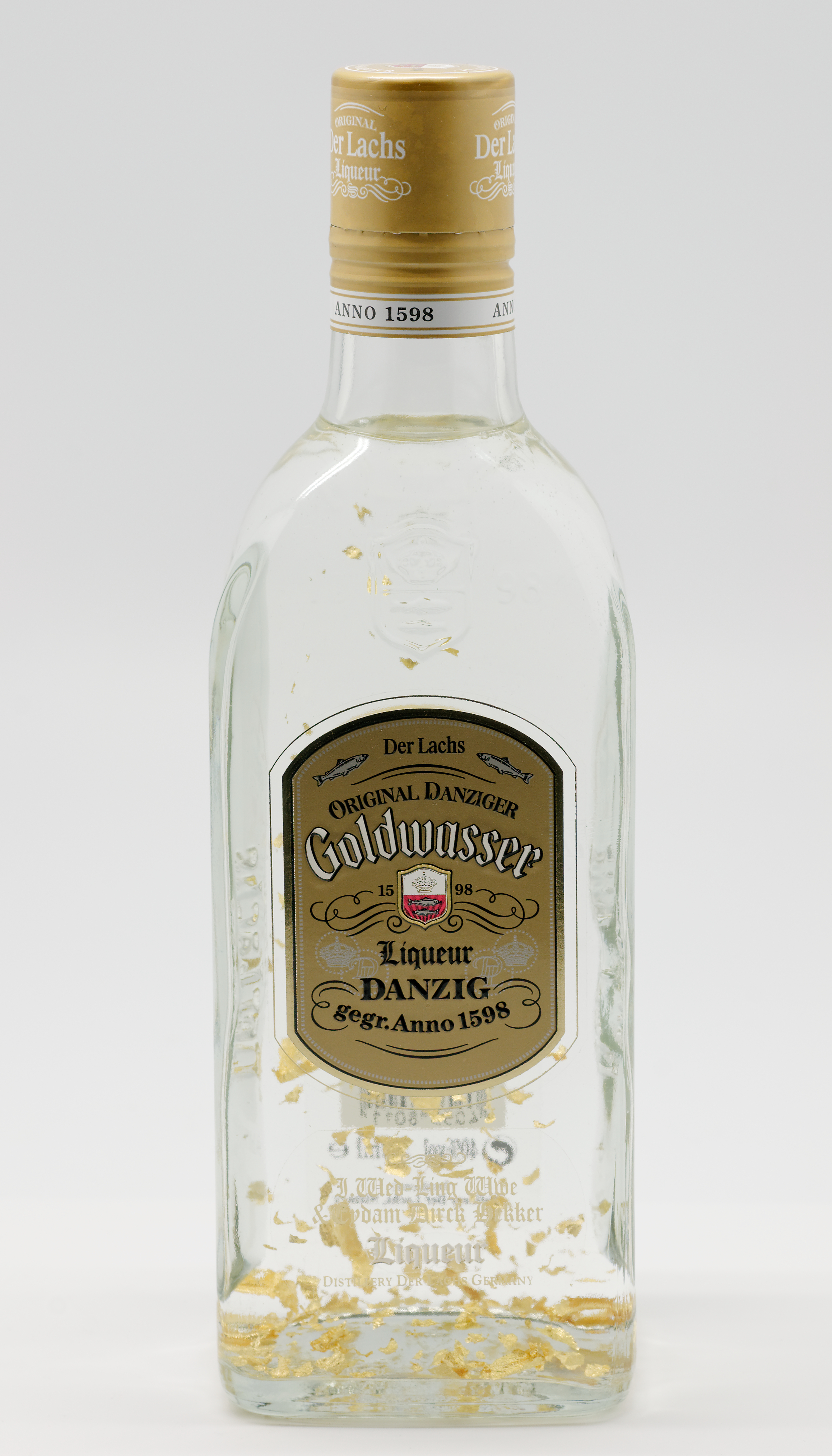|
Vark
Vark (also varak or warq) is a fine filigree foil sheet of pure metal, typically silver but sometimes gold,Gold in Gastronomy deLafee, Switzerland (2008) used to decorate and . The silver and gold are edible, though flavorless. Vark is made by pounding silver into sheets less than one (μm) thick, typically 0.2 μm-0.8 μm. The silver sheets are typically packed between layers of paper for support ... [...More Info...] [...Related Items...] OR: [Wikipedia] [Google] [Baidu] |
Barfi
Barfi, barfee, borfi or burfi is a dense milk-based sweet from the Indian subcontinent. The name comes from the Hindustani (originally Persian) word ''barf'', which means snow. Common types of barfi include ''besan barfi'' (made with gram flour), ''kaju barfi'' (made with cashews), ''pista barfi'' (made with ground pistachios), and ''sing barfi'' (made with peanuts). Milk powder and sugar are the main ingredients of barfi. The ingredients are cooked in a vessel until the mixture solidifies. The mixture is then transferred to a shallow pan and cooled. Finally, it is cut into squares, diamonds, or circular shapes and served. In addition to nuts, barfi is often flavoured with fruits such as mango or coconut and spices such as cardamom or rose water. It comes in various colours and textures. Barfi is sometimes coated with a thin layer of edible metallic leaf known as ''vark''. It is served at both informal and formal events. Types * ''Kesri pedha'': saffron, flattened yellow rou ... [...More Info...] [...Related Items...] OR: [Wikipedia] [Google] [Baidu] |
Silver
Silver is a chemical element with the Symbol (chemistry), symbol Ag (from the Latin ', derived from the Proto-Indo-European wikt:Reconstruction:Proto-Indo-European/h₂erǵ-, ''h₂erǵ'': "shiny" or "white") and atomic number 47. A soft, white, lustrous transition metal, it exhibits the highest electrical conductivity, thermal conductivity, and reflectivity of any metal. The metal is found in the Earth's crust in the pure, free elemental form ("native silver"), as an alloy with gold and other metals, and in minerals such as argentite and chlorargyrite. Most silver is produced as a byproduct of copper, gold, lead, and zinc Refining (metallurgy), refining. Silver has long been valued as a precious metal. Silver metal is used in many bullion coins, sometimes bimetallism, alongside gold: while it is more abundant than gold, it is much less abundant as a native metal. Its purity is typically measured on a per-mille basis; a 94%-pure alloy is described as "0.940 fine". As one of th ... [...More Info...] [...Related Items...] OR: [Wikipedia] [Google] [Baidu] |
Silver
Silver is a chemical element with the Symbol (chemistry), symbol Ag (from the Latin ', derived from the Proto-Indo-European wikt:Reconstruction:Proto-Indo-European/h₂erǵ-, ''h₂erǵ'': "shiny" or "white") and atomic number 47. A soft, white, lustrous transition metal, it exhibits the highest electrical conductivity, thermal conductivity, and reflectivity of any metal. The metal is found in the Earth's crust in the pure, free elemental form ("native silver"), as an alloy with gold and other metals, and in minerals such as argentite and chlorargyrite. Most silver is produced as a byproduct of copper, gold, lead, and zinc Refining (metallurgy), refining. Silver has long been valued as a precious metal. Silver metal is used in many bullion coins, sometimes bimetallism, alongside gold: while it is more abundant than gold, it is much less abundant as a native metal. Its purity is typically measured on a per-mille basis; a 94%-pure alloy is described as "0.940 fine". As one of th ... [...More Info...] [...Related Items...] OR: [Wikipedia] [Google] [Baidu] |
Silver Coated Spices By Shree Aditya Silver Leaves
Silver is a chemical element with the symbol Ag (from the Latin ', derived from the Proto-Indo-European ''h₂erǵ'': "shiny" or "white") and atomic number 47. A soft, white, lustrous transition metal, it exhibits the highest electrical conductivity, thermal conductivity, and reflectivity of any metal. The metal is found in the Earth's crust in the pure, free elemental form ("native silver"), as an alloy with gold and other metals, and in minerals such as argentite and chlorargyrite. Most silver is produced as a byproduct of copper, gold, lead, and zinc refining. Silver has long been valued as a precious metal. Silver metal is used in many bullion coins, sometimes alongside gold: while it is more abundant than gold, it is much less abundant as a native metal. Its purity is typically measured on a per-mille basis; a 94%-pure alloy is described as "0.940 fine". As one of the seven metals of antiquity, silver has had an enduring role in most human cultures. Other than in curre ... [...More Info...] [...Related Items...] OR: [Wikipedia] [Google] [Baidu] |
Hindus
Hindus (; ) are people who religiously adhere to Hinduism.Jeffery D. Long (2007), A Vision for Hinduism, IB Tauris, , pages 35–37 Historically, the term has also been used as a geographical, cultural, and later religious identifier for people living in the Indian subcontinent. The term ''"Hindu"'' traces back to Old Persian which derived these names from the Sanskrit name ''Sindhu'' (सिन्धु ), referring to the river Indus. The Greek cognates of the same terms are "''Indus''" (for the river) and "''India''" (for the land of the river). The term "''Hindu''" also implied a geographic, ethnic or cultural identifier for people living in the Indian subcontinent around or beyond the Indus River, Sindhu (Indus) River. By the 16th century CE, the term began to refer to residents of the subcontinent who were not Turkic peoples, Turkic or Muslims. Hindoo is an archaic spelling variant, whose use today is considered derogatory. The historical development of Hindu self-i ... [...More Info...] [...Related Items...] OR: [Wikipedia] [Google] [Baidu] |
South Asian Sweets
Mithai (sweets) are the confectionery and desserts of the Indian subcontinent.The Sweet Side of the Subcontinent Raison d'Etre, New York City (September 20, 2012) Thousands of dedicated shops in , , , and |
Diwali Sweets India 2009
Diwali (), Dewali, Divali, or Deepavali ( IAST: ''dīpāvalī''), also known as the Festival of Lights, related to Jain Diwali, Bandi Chhor Divas, Tihar, Swanti, Sohrai, and Bandna, is a religious celebration in Indian religions. It is one of the most important festivals within Hinduism where it generally lasts five days (or six in some regions of India), and is celebrated during the Hindu lunisolar months of Ashvin (according to the amanta tradition) and Kartika (between mid-October and mid- November).''The New Oxford Dictionary of English'' (1998) – p. 540 "Diwali /dɪwɑːli/ (also Diwali) noun a Hindu festival with lights...". It is a post-harvest festival celebrating the bounty following the arrival of the monsoon in the subcontinent. Diwali symbolises the spiritual "victory of light over darkness, good over evil, and knowledge over ignorance".Jean Mead, ''How and why Do Hindus Celebrate Divali?'', The festival is widely associated with Lakshmi,Suzanne Barche ... [...More Info...] [...Related Items...] OR: [Wikipedia] [Google] [Baidu] |
Jains
Jainism ( ), also known as Jain Dharma, is an Indian religion. Jainism traces its spiritual ideas and history through the succession of twenty-four tirthankaras (supreme preachers of ''Dharma''), with the first in the current time cycle being Rishabhadeva, whom the tradition holds to have lived millions of years ago, the twenty-third ''tirthankara'' Parshvanatha, whom historians date to the 9th century BCE, and the twenty-fourth ''tirthankara'' Mahavira, around 600 BCE. Jainism is considered to be an eternal ''dharma'' with the ''tirthankaras'' guiding every time cycle of the cosmology. The three main pillars of Jainism are ''ahiṃsā'' (non-violence), ''anekāntavāda'' (non-absolutism), and '' aparigraha'' (asceticism). Jain monks, after positioning themselves in the sublime state of soul consciousness, take five main vows: ''ahiṃsā'' (non-violence), '' satya'' (truth), '' asteya'' (not stealing), ''brahmacharya'' (chastity), and '' aparigraha'' (non-possessiveness). The ... [...More Info...] [...Related Items...] OR: [Wikipedia] [Google] [Baidu] |
Danziger Goldwasser
Goldwasser ("Gold water from Gdańsk"), pol. Wódka Gdańska, with Goldwasser as the registered tradename, is a strong (40% ABV) root and herbal liqueur which was produced from 1598 to 2009 in Gdańsk. Production now takes place in Germany. The most prominent characteristic of the drink is small flakes of 23 karat gold suspended in it. The beverage also includes herbs and spices such as cardamom, cloves, cinnamon, lavender, thyme, coriander and juniper, and has a syrupy texture. Alcoholic solutions were used by artists for gilding, which is believed to be the inspiration for the drink. Alchemy, which was at its high point in the late 16th century when Goldwasser appeared, held gold to have many desirable medical properties; while modern medicine disputes this, native gold is known to be non-toxic to humans and to pass through the digestive tract unchanged, unlike most other heavy metals. Since the flakes are extremely small and thin, the price is not prohibitive. When use ... [...More Info...] [...Related Items...] OR: [Wikipedia] [Google] [Baidu] |
Bangladesh
Bangladesh (}, ), officially the People's Republic of Bangladesh, is a country in South Asia. It is the eighth-most populous country in the world, with a population exceeding 165 million people in an area of . Bangladesh is among the most densely populated countries in the world, and shares land borders with India to the west, north, and east, and Myanmar to the southeast; to the south it has a coastline along the Bay of Bengal. It is narrowly separated from Bhutan and Nepal by the Siliguri Corridor; and from China by the Indian state of Sikkim in the north. Dhaka, the capital and largest city, is the nation's political, financial and cultural centre. Chittagong, the second-largest city, is the busiest port on the Bay of Bengal. The official language is Bengali, one of the easternmost branches of the Indo-European language family. Bangladesh forms the sovereign part of the historic and ethnolinguistic region of Bengal, which was divided during the Partition of India in ... [...More Info...] [...Related Items...] OR: [Wikipedia] [Google] [Baidu] |
India
India, officially the Republic of India (Hindi: ), is a country in South Asia. It is the seventh-largest country by area, the second-most populous country, and the most populous democracy in the world. Bounded by the Indian Ocean on the south, the Arabian Sea on the southwest, and the Bay of Bengal on the southeast, it shares land borders with Pakistan to the west; China, Nepal, and Bhutan to the north; and Bangladesh and Myanmar to the east. In the Indian Ocean, India is in the vicinity of Sri Lanka and the Maldives; its Andaman and Nicobar Islands share a maritime border with Thailand, Myanmar, and Indonesia. Modern humans arrived on the Indian subcontinent from Africa no later than 55,000 years ago., "Y-Chromosome and Mt-DNA data support the colonization of South Asia by modern humans originating in Africa. ... Coalescence dates for most non-European populations average to between 73–55 ka.", "Modern human beings—''Homo sapiens''—originated in Africa. Then, int ... [...More Info...] [...Related Items...] OR: [Wikipedia] [Google] [Baidu] |
Molding (process)
Molding (American English) or moulding (British and Commonwealth English; see spelling differences) is the process of manufacturing by shaping liquid or pliable raw material using a rigid frame called a mold or matrix. This itself may have been made using a pattern or model of the final object. A mold or mould is a hollowed-out block that is filled with a liquid or pliable material such as plastic, glass, metal, or ceramic raw material. The liquid hardens or sets inside the mold, adopting its shape. A mold is a counterpart to a cast. The very common bi-valve molding process uses two molds, one for each half of the object. Articulated molds have multiple pieces that come together to form the complete mold, and then disassemble to release the finished casting; they are expensive, but necessary when the casting shape has complex overhangs. Piece-molding uses a number of different molds, each creating a section of a complicated object. This is generally only used for larger a ... [...More Info...] [...Related Items...] OR: [Wikipedia] [Google] [Baidu] |


.jpg)


